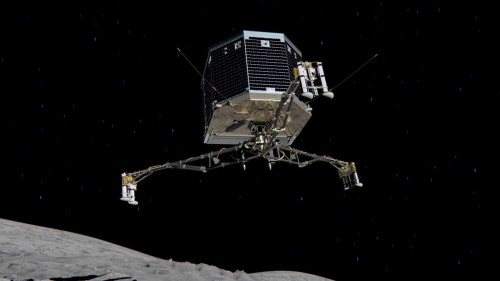
The Philae landing robot has sent back to Earth the first photos from the surface of comet 67/P Churyumov-Gerasimenko, confirming the success of the landing process despite its complexity.
The European Space Agency (ESA) released the first photo taken by Philae on the surface of the comet after its landing. The picture shows that the robot is on a safe and stable area on the surface of 67/P Churyumov-Gerasimenko.
Juan Miro, head of ESA’s ground engineering systems, told Efe news agency that the connection with the comet was stable, which was the most important thing.
The next step was to ensure that Philae was getting enough solar energy to operate, he said.
Miro described the landing as “very good”, and the reason the ESA could not rate the whole operation as “excellent” was that the signal briefly disappeared before returning to full strength.
He also revealed that during the landing maneuver, two harpoons that were supposed to stabilise Philae on the comet’s surface did not work, as well as another device designed to anchor the robot to the comet.
Miro added that Philae descended on to the comet’s surface, bounced up, and descended once again before bouncing up again.
The mother probe Rosetta launched Philae towards the comet from a distance of 13.6 miles Wednesday.
The robot, which weighs 98 kg, later landed on the surface with the mission of studying its composition and conducting scientific experiments over the next few months.
Comets are among the universe’s oldest celestial bodies, and a comet impact may have been a possible source of water molecules during the early formative period of the planet Earth.